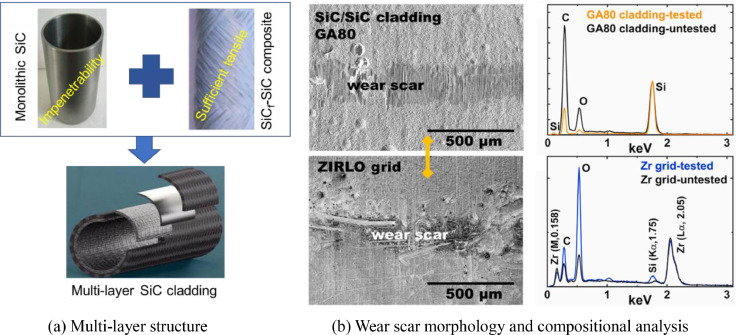
What are Zircaloy-2's properties and uses in nuclear tech

The field of nuclear technology has consistently sought materials that can withstand extreme conditions, and one such material that stands out is Zircaloy-2. This high-performance alloy, primarily composed of zirconium, has become indispensable in the nuclear industry, particularly in the construction of fuel rods for various reactor types. With its remarkable corrosion resistance, strong mechanical properties, and ability to endure high temperatures, Zircaloy-2 is engineered to maximize safety and efficiency in nuclear reactors, making it a pivotal material in the production of nuclear fuel.
This article delves into the various properties and applications of Zircaloy-2 in the nuclear sector. By examining its composition, characteristics, and the integral role it plays in nuclear reactors, we aim to provide a comprehensive understanding of why Zircaloy is a preferred material in this demanding industry. From its mechanical and thermal properties to the challenges it faces, the exploration of Zircaloy-2 will highlight its significance and future prospects in nuclear engineering.
- What is Zircaloy-2?
- Mechanical Properties of Zircaloy-2
- Corrosion Resistance and Oxidation Behavior
- Thermal Properties of Zircaloy-2
- Role of Zircaloy-2 in Nuclear Fuel Rods
- Advantages of Using Zircaloy-2 in Nuclear Reactors
- Applications in Other Nuclear Technologies
- Challenges and Limitations of Zircaloy-2
- Future Prospects for Zircaloy-2 in Nuclear Engineering
- Conclusion
What is Zircaloy-2?
Zircaloy-2 is a specific type of zirconium alloy predominantly used in the nuclear industry. It comprises approximately 98% zirconium along with a small percentage of tin, chromium, iron, and nickel. The engineering of Zircaloy focuses on enhancing its functional properties while minimizing its neutron absorption, which is vital for maintaining reactor efficiency. Given its unique composition, Zircaloy-2 exhibits superior performance characteristics that are particularly suited for use in nuclear reactors.
Composition and Characteristics of Zircaloy-2
The unique composition of Zircaloy-2 plays a crucial role in determining its characteristics. Typically, Zircaloy-2 contains about 1.2% tin, 0.1% iron, 0.05% chromium, and 0.1% nickel. This specific mix not only enhances its mechanical properties but also significantly improves its corrosion resistance. The alloy’s low neutron absorption cross-section also ensures that it does not interfere with the nuclear fission process, allowing for efficient reactor operation.
The structural integrity of Zircaloy-2 is a standout characteristic, where it displays excellent tensile strength and ductility at elevated temperatures. This allows the material to maintain performance under the operational conditions that are typical of nuclear reactors, where both pressure and temperature can be substantial.
Mechanical Properties of Zircaloy-2
A primary reason for the extensive use of Zircaloy-2 in nuclear applications is its mechanical properties. The alloy exhibits high yield strength and tensile strength, which enable it to endure the physical stresses found in reactors. Specifically, the yield strength of Zircaloy-2 can exceed 800 MPa, while the ultimate tensile strength can reach over 1,200 MPa, making it robust enough to handle mechanical loads that may arise during normal operations or unusual events within the reactor.
Moreover, Zircaloy-2 maintains good ductility, which is essential in preventing brittle fracture under extreme conditions. The balance between strength and ductility ensures that the material can undergo deformation without significant loss of structural integrity, adding to the safety profile of the reactors using this alloy.
Corrosion Resistance and Oxidation Behavior
Corrosion resistance is one of the most critical properties of any material used in nuclear reactors, and Zircaloy-2 excels in this aspect. Due to its protective oxide film that forms on the surface when exposed to water and high temperatures, Zircaloy-2 demonstrates remarkable resistance to oxidative degradation. This oxide layer effectively inhibits further corrosion, allowing the alloy to withstand the harsh conditions prevalent in reactor environments.
The oxidation behavior of Zircaloy-2 is characterized by relatively low oxidation rates under operational conditions. However, it is important for designers and engineers to consider the potential for oxidation during both normal operation and accident conditions to ensure that fuel rod integrity is maintained throughout the operating life of the reactor.
Thermal Properties of Zircaloy-2
Zircaloy-2 also boasts commendable thermal properties, which are essential for reactor efficiency. The alloy has a high melting point, around 1855°C, enabling it to perform well under the extreme heat generated during nuclear fission. Additionally, its thermal conductivity allows for effective heat transfer, ensuring that heat generated in the reactor core is adequately managed.
This effective thermal management contributes to reactor safety, as it minimizes the risk of overheating that could lead to catastrophic failures. Such properties ensure that as a fuel rod material, Zircaloy-2 can handle the intense thermal stresses of a nuclear environment.
Role of Zircaloy-2 in Nuclear Fuel Rods
The essential role of Zircaloy-2 in nuclear fuel rods cannot be overstated. Fuel rods made from this alloy serve as reliable containers for the nuclear fuel, typically pellets of enriched uranium dioxide. The excellent mechanical and thermal characteristics of Zircaloy-2 ensure that these rods can withstand both the physical and thermal stresses of reactor operation while maintaining their structural integrity throughout their operational life.
Furthermore, the low neutron absorption properties of Zircaloy-2 ensure that the effectiveness of the nuclear fuel is maximized, allowing for a higher rate of fission reaction and improved reactor performance. This combination of properties makes Zircaloy-2 an ideal material for use in various types of nuclear reactors including pressurized water reactors (PWR) and boiling water reactors (BWR).
Advantages of Using Zircaloy-2 in Nuclear Reactors
There are numerous advantages to using Zircaloy-2 in nuclear reactors. Firstly, its superior corrosion resistance leads to longer service life for fuel rods, which can minimize maintenance costs and reduce downtime. This longevity directly translates into economic benefits, enhancing the overall cost-effectiveness of nuclear power generation.
Moreover, the excellent mechanical properties of Zircaloy-2 ensure enhanced safety margins. The ductility and strength of the material help prevent catastrophic failures during normal and transient operating conditions. Additionally, the thermal properties, including high melting points and thermal conductivity, contribute to effective heat management within the reactor, leading to improved safety and efficiency.
Applications in Other Nuclear Technologies
While Zircaloy-2 is predominantly used in fuel rods, its applications extend to other areas of nuclear technology. In certain reactor designs, Zircaloy-2 is utilized in control rod materials and structural components due to its mechanical resilience and corrosion resistance. The alloy's ability to shield against radiation also makes it suitable for various components in radiation therapy and diagnostic devices.
Furthermore, research into advanced reactor designs often includes assessments of Zircaloy-2 for use in Generation IV reactors, which promise improved fuel efficiency and safety features. This ongoing evolution showcases the versatility of Zircaloy-2 and its prominence in the future designs of nuclear technology.
Challenges and Limitations of Zircaloy-2
Despite its impressive array of properties, Zircaloy-2 is not without its challenges and limitations. One significant issue is its behavior under accident conditions, specifically regarding the implications of high-temperature oxidation. Under extreme conditions, the formation of hydrogen gas due to oxidation can lead to safety concerns, including the potential for explosive scenarios.
Additionally, the alloy's mechanical properties may degrade over extended exposure to neutron radiation, known as “neutron embrittlement,” which can compromise the structural integrity of fuel rods over time. This necessitates ongoing research and development to enhance the resilience of Zircaloy-2 and explore alternative materials that could mitigate these issues.
Future Prospects for Zircaloy-2 in Nuclear Engineering
The future of Zircaloy-2 in nuclear engineering remains promising, despite the challenges. Ongoing research is focused on improving its composition and processing methods to enhance its performance and longevity. Innovations such as alloying Zircaloy-2 with other elements or applying advanced coatings could potentially mitigate oxidation and neutron embrittlement issues.
Moreover, as the demand for nuclear power increases, the development of advanced reactor designs that leverage Zircaloy-2 could further solidify its role in the nuclear sector. The continued study into Zircaloy-2's properties will enhance our understanding and utilize the material's advantages in creating safer and more efficient nuclear technologies.
Conclusion
In conclusion, Zircaloy-2 stands out as a critical material in the field of nuclear technology due to its exceptional properties and versatile applications. From its impressive mechanical strength and corrosion resistance to its fundamental role in nuclear fuel rods, Zircaloy-2 significantly contributes to both the safety and efficiency of nuclear reactors. As challenges arise, ongoing research is set to refine this alloy, paving the way for its continued relevance in future nuclear engineering endeavors. Understanding and leveraging the properties and advantages of Zircaloy-2 will shape the trajectory of nuclear technology, ensuring a robust and safe energy future.
Did you find this article helpful? What are Zircaloy-2's properties and uses in nuclear tech See more here Education.
Leave a Reply






Related posts